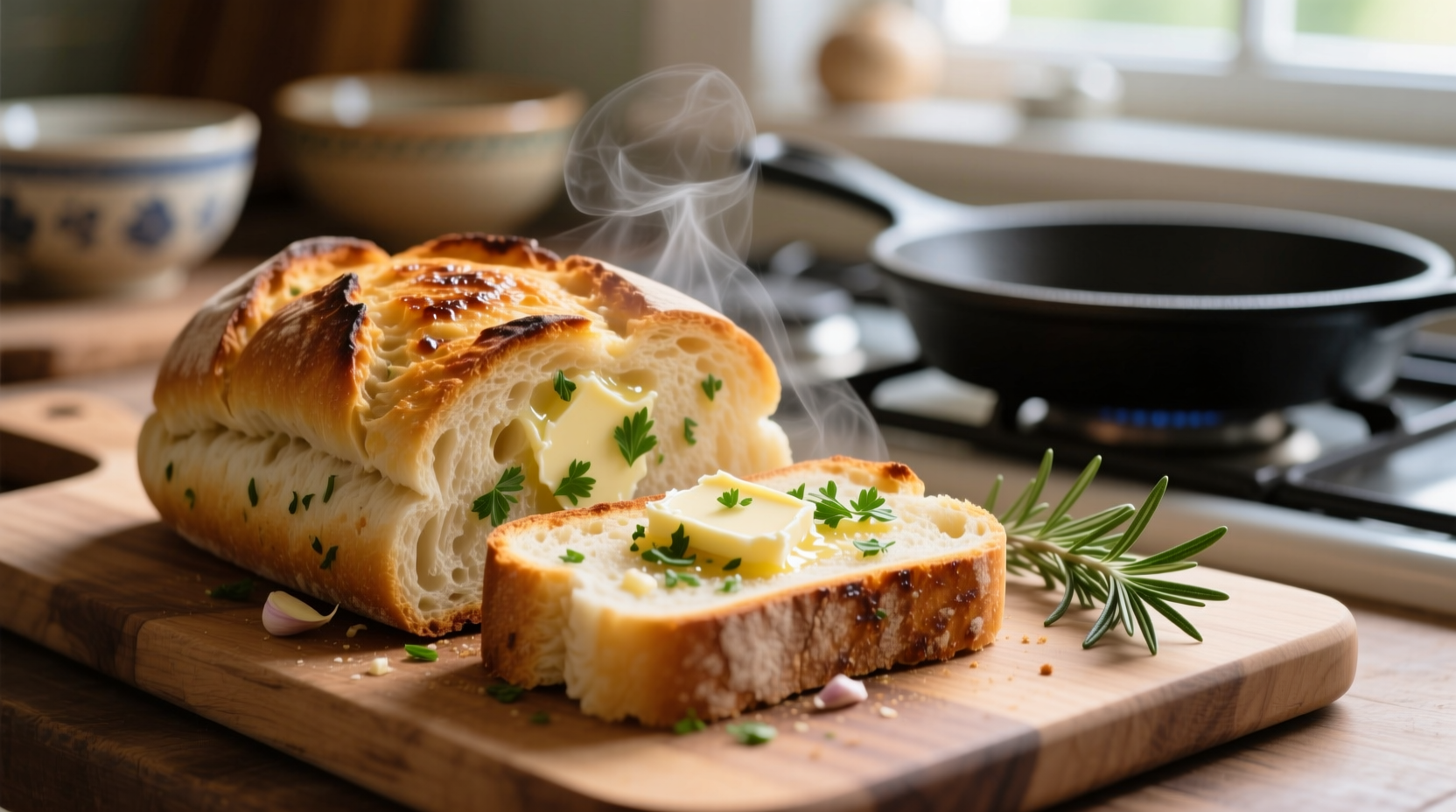There's nothing quite like the aroma of freshly made garlic bread toast filling your kitchen. This beloved staple has evolved from humble peasant food to a restaurant favorite, but the best homemade garlic bread toast remains surprisingly simple to create with the right technique. Forget dry, store-bought versions—with our guide, you'll achieve professional results that impress guests while satisfying your craving for that perfect garlic-to-butter ratio.
The Evolution of Garlic Bread: From Rustic Roots to Modern Favorite
Garlic bread's journey began centuries ago in Mediterranean kitchens, where resourceful cooks rubbed stale bread with raw garlic and drizzled it with olive oil—a practical solution to refresh hardened loaves. Historical records from 16th century Italy document "pane all'aglio" as peasant food, while French "pain à l'ail" appeared in Provencal cookbooks by the 1800s. The version we recognize today—with butter and herbs—gained popularity in American-Italian restaurants during the mid-20th century, according to culinary historian John Mariani's research on American food traditions.
Essential Ingredients and Smart Substitutions
Quality ingredients make the difference between good and exceptional homemade garlic bread toast. While the classic version shines with simplicity, these substitutions accommodate dietary needs without sacrificing flavor:
| Traditional Ingredient | Best Substitution | Flavor Impact | When to Use |
|---|---|---|---|
| Unsalted butter | Olive oil (extra virgin) | Grassy, fruitier notes | For authentic Italian style |
| Fresh garlic | Roasted garlic paste | Sweeter, milder garlic flavor | When serving children or garlic-sensitive guests |
| White bread baguette | Sourdough loaf | Tangier, chewier texture | For more complex flavor profile |
| Fresh parsley | Chives or basil | Onion-like or sweet herbal notes | Seasonal availability issues |
Step-by-Step: Crafting Perfect Garlic Bread Toast
Preparation Phase: Setting Up for Success
Before you begin, gather these tools: a sharp serrated knife, small mixing bowl, fork, and pastry brush. Room temperature butter spreads more evenly—take it from the refrigerator 30 minutes ahead. For the best homemade garlic bread toast, use day-old bread that's slightly dried out; fresh bread becomes soggy when buttered. The Culinary Institute of America's baking science department confirms that bread with 35-40% moisture content yields optimal texture after toasting.
Creating the Garlic-Butter Mixture
Combine 1 cup softened unsalted butter with 4-6 minced garlic cloves (adjust to taste), 2 tablespoons chopped fresh parsley, 1/4 teaspoon salt, and optional 1/4 teaspoon red pepper flakes. Pro tip: Press minced garlic against your cutting board with the flat side of your knife—this releases more flavor compounds than chopping alone. Let the mixture rest for 15 minutes to allow flavors to meld, which food science research shows enhances garlic's aromatic compounds.

Application and Toasting Techniques
Cut your baguette horizontally, exposing maximum surface area. Generously spread the garlic butter mixture 1/4 inch thick across both cut sides, extending to the edges to prevent dry spots. For restaurant-quality results, use the "butter pocket" technique: Make shallow diagonal cuts every inch across the bread surface, then pipe additional butter into these slits. This creates multiple flavor pockets that stay moist during toasting.
Toast using one of these methods:
- Oven method: 375°F for 10-12 minutes until golden (best for multiple servings)
- Broiler method: 3-5 minutes under medium broiler (watch carefully!)
- Toaster oven: 5-7 minutes at 350°F (ideal for single servings)
Avoiding Common Garlic Bread Mistakes
Even experienced cooks make these homemade garlic bread toast errors. Understanding these context boundaries ensures perfect results every time:
- Raw garlic burn: Garlic burns at 350°F—always mix with fat (butter/oil) first. Burnt garlic turns bitter.
- Soggy bread: Applying cold butter or using fresh bread causes sogginess. Always use room temperature butter on slightly stale bread.
- Uneven toasting: Placing bread directly on oven rack creates hot spots. Use a wire rack for air circulation.
- Flavor imbalance: Too much garlic overwhelms—start with 1 clove per serving and adjust upward.
Serving and Storage Tips
Serve immediately for that irresistible crisp exterior and steamy interior. Pair with tomato-based dishes like pasta or soup—the acidity balances the richness. For gatherings, keep warm in a 200°F oven up to 20 minutes. Leftovers? Store cooled garlic bread in an airtight container for up to 2 days. Reheat in a 325°F oven for 5-7 minutes—never microwave, which creates rubbery texture.
Perfect Pairings for Your Homemade Garlic Bread Toast
Elevate your easy homemade garlic bread toast with these professional pairing suggestions:
- Cheese upgrade: Sprinkle with Parmesan during final 2 minutes of toasting
- Seafood complement: Serve alongside clam linguine or shrimp scampi
- Vegetarian option: Top with roasted cherry tomatoes and fresh basil
- Dipping sauces: Pair with balsamic reduction or roasted red pepper dip
Frequently Asked Questions
Here are answers to common questions about making perfect homemade garlic bread toast:











 浙公网安备
33010002000092号
浙公网安备
33010002000092号 浙B2-20120091-4
浙B2-20120091-4